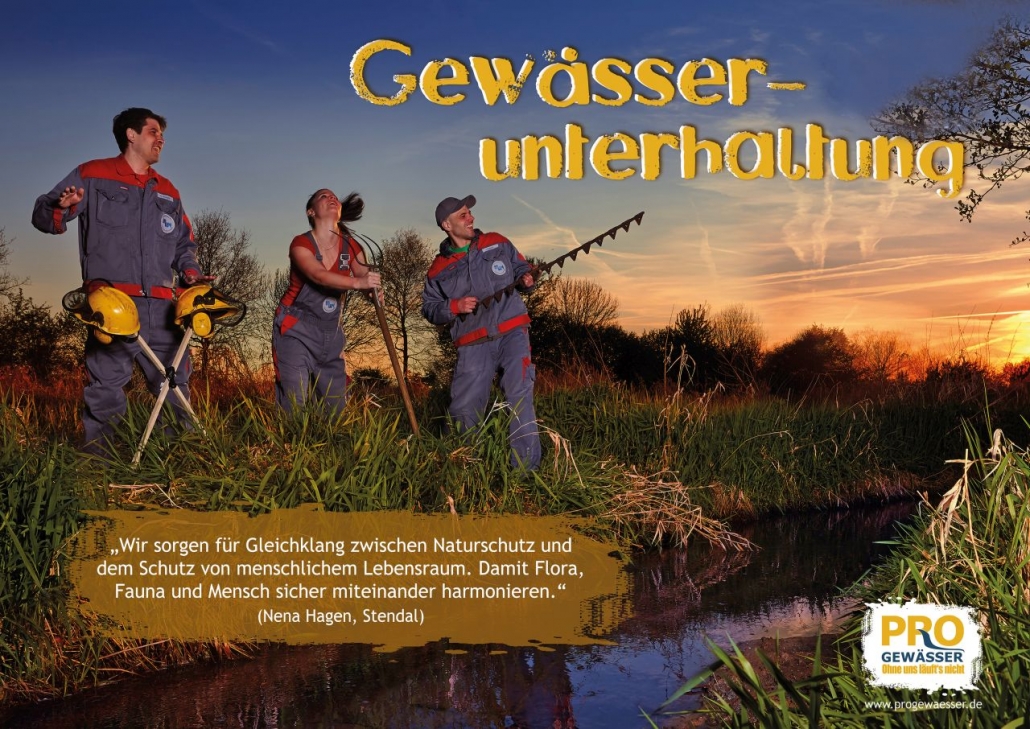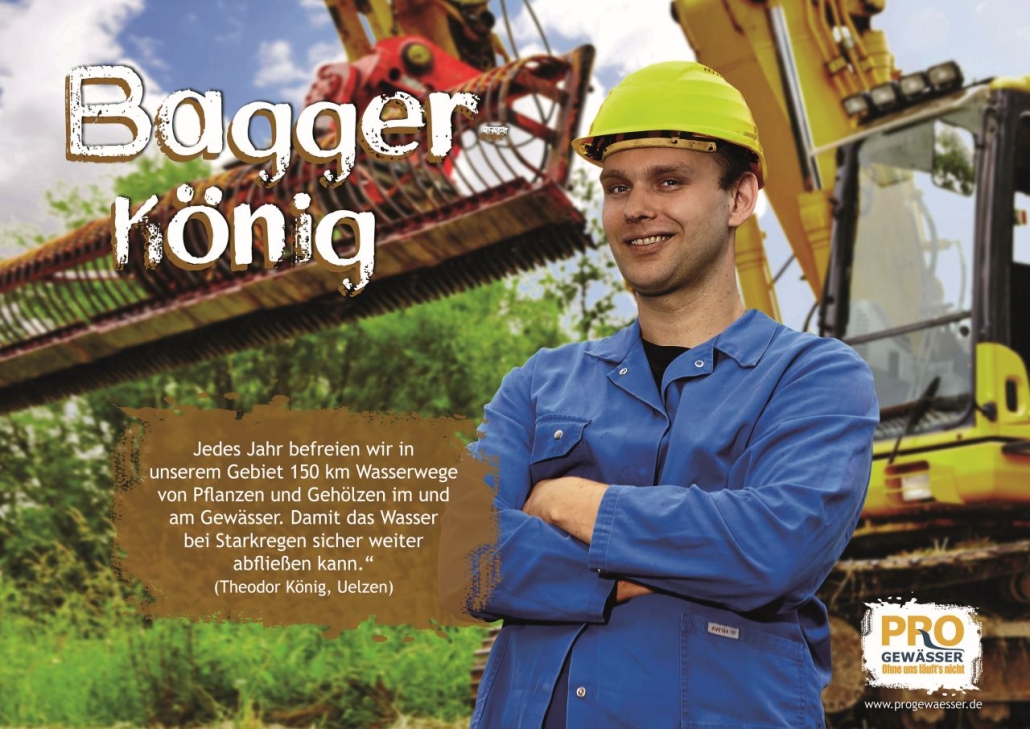MAINTENANCE OF WATER BODIES
The protection and maintenance of flowing and standing water bodies in their natural habitat
is the responsibility of the water body maintenance associations.
After rain seeps into the earth, it feeds our streams, lakes and rivers before collecting in the oceans, only to ultimately rise up again and provide new rainwater once more. This is a perpetual cycle.
The function of the water bodies must be safeguarded to ensure this cycle continues to flow smoothly. Too much or too little water puts lives at risk, which is why our water needs to be managed. This has been the responsibility of water and soil associations for hundreds of years, and their work is an essential part of our cultivated landscape.
Without the work of these water and soil associations, vast expanses of this landscape would only be accessible by boat. It’s impossible to imagine what roads, paths, settlements – in fact, our entire modern infrastructure – would be like without the work of these important associations.
Until the 1980s, watercourses were designed by humans so that surface water could run off as quickly as possible.
For many years, however, aspects of landscape conservation and nature protection have been given equal consideration in modern water body maintenance. The EU Water Framework Directive was adopted in December 2000 and states that the aim of water body maintenance is to increase and ensure the quality of Europe-wide waters. It balances the different economic and ecological interests placed on the water bodies. Actions are based on water quantity and water quality management.
When it comes to water body maintenance, the associations are the most important points of contact across the country and they boast cost-effective self-government, experience and competence. A well-functioning system of water associations protects and preserves water and its value.










